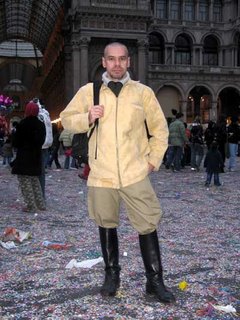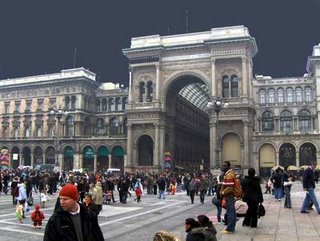February 2007: Milan – Galleria Vittorio Emanuele


The Galleria was initially planned as a covered street to honour the Austrian Emperor Franz Joseph in 1859; but when Giuseppe Mengoni took over the direction of the works in 1864, it had already been dedicated to Vittorio Emanuele II of Savoy.
The Galleria was opened in 1867 and completed by the year 1878. This monumental building with a glazed iron roof is a pedestrian mall linking Piazza del Duomo with Piazza della Scala. On the floor in the central octagonal area, directly under the 47-m (154-ft) hight glass dome, is the heraldic symbol of the Savoy family, a white cross on a red ground. Positioned on corbels at the entrances and in the Octagon between July and September 1867 were a series of life-size plaster statues of "illustrious men": figures who contributed to the foundation of literary, artistic and scientific culture.
The 25 statues were executed by the best academy sculptors of the mid19th century, including Odoardo Tabacchi, who realised the statue of Dante, Antonio Tantardini, responsible for the statue of Romagnosi, and Pietro Magni, who made those of Volta, Michelangelo, Galileo, Cavour, Leonardo and Pier Capponi. The works, which were to have been translated into marble, were, however, never replaced and, as a result of damage caused by changes in temperature, were removed in 1891. Lunettes were installed above the Octagon and below the valut in August 1867 with colossal personifications of the four corners of the globe, executed in tempera on canvas panels (America, Asia, Europe, and Africa).
The decorative programme was rounded off by the semi-lunettes with depictions of human activities.Its grounds host elegant restaurants, cafes and shops, including several bookstores.
Thanks to the elegance and grace of its shops the Galleria, being one of the symbols of the city, is often referred to as Milan's "drawing-room".
Thanks to the elegance and grace of its shops the Galleria, being one of the symbols of the city, is often referred to as Milan's "drawing-room".


0 Comments:
Post a Comment
<< Home